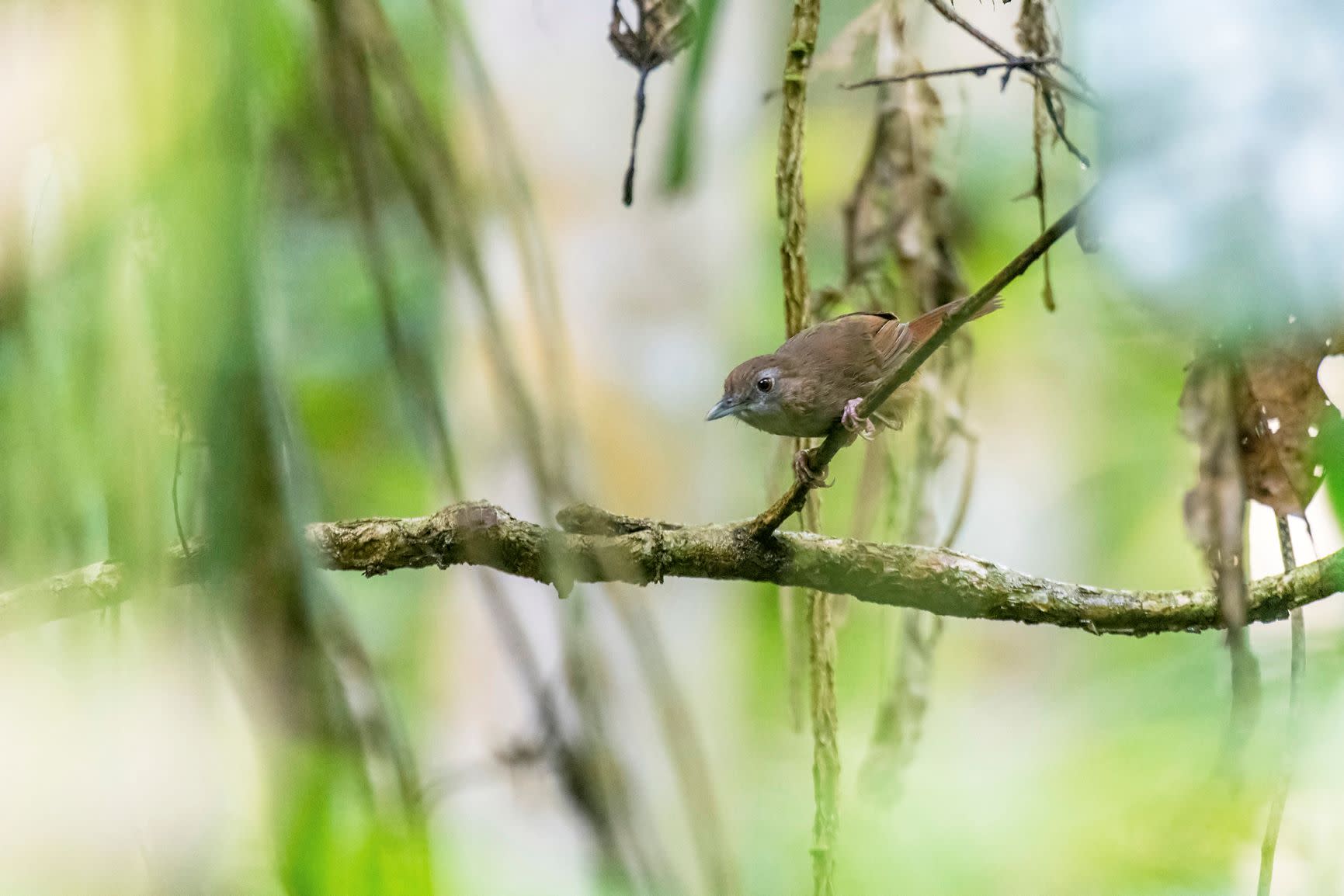 Listen to this article
•
15:34 min
Listen to this article
•
15:34 min
One fine September morning I was gallivanting with other birders in the forests of Hollongapar Gibbon Wildlife Sanctuary. We’d had a good day of sightings following an early wake up, and had managed to see all the birds on our wish list. On our way back home, we were not really on the lookout for birds anymore, and were lost in conversation with our birding partners. From somewhere close, a bird let out a soft call. In an instant our conversations were forgotten, our binoculars and senses alert. We looked for signs of the musician. A flicker in the branch, a rustle in the leaves, and then, for a brief moment it popped out — a small, plump brown bird with a thick bill. The Abbott’s babbler! And then, just as soon as it showed up, it vanished into the green labyrinth.

Assam’s Gibbon Sanctuary is most famous for its hoolock gibbons — the only non-human ape found in the country. However, what many fail to observe is the high diversity of birds found in this tiny 23 sq km patch of isolated forest. Among them, the Abbott’s babbler (Malacocincla abbotti) holds a special place in the ‘skulker’ category (that’s birding lingo for any bird that is shy). The Abbott’s babbler belongs to the Pellorneidae family. It was described by English zoologist Edward Blyth in 1845, who gave it the genus the name Malacocincla — malakos is Greek for soft and cinclus is Latin for thrush.
At 12-13 cm in length Abbott’s babbler is a small, short tailed bird. It is an insectivorous lowland species that is found up to an altitude of 600 m.
The Abbott’s babbler is a generalist species i.e. it can survive in a wide range of habitats. It is distributed in much of the northeastern states of Assam, Arunachal Pradesh, and Meghalaya. There is a disjunct population also present in Northeast Andhra Pradesh and Odisha. Outside India the Abbott’s babbler is found in Nepal, Bangladesh, and much of Southeast Asia. A research article from Southeast Asia mentions how the Abbott’s babbler also inhabits disturbed habitats like secondary forests and plantations, which explains why this species also persists in the small fragmented forest that makes up the Gibbon Sanctuary. According to Ali and Ripley in the Handbook of the Birds of India and Pakistan, this bird “affects tangled thickets in wet deep jungle and original forest, especially edges of forest along the banks of streams; appears to have a predilection for the vicinity of palmferns.”

The nesting season for the babbler begins in April and can continue well into July. During this time, it makes its nest of dead leaves, bracken fronds, weeds, and moss, and lines it with coarse red roots. These nests are usually built at the base of palm fronds or bushes. Their eggs are spectacularly colourful — bright salmon in hue with bold blotches, a short twisted red line, and underlying spots of lavender.
Although placed in the ‘least concern’ category by the IUCN, the Abbott’s babbler, like other low canopy and woodland birds, bears the brunt of habitat loss. Given the elusive nature of these birds, there have been very few studies, and almost no information exists on its ecology, preferred habitats or the impact of environmental changes. Birds like these often decline and vanish without common knowledge, something akin to a ‘silent extinction’.





